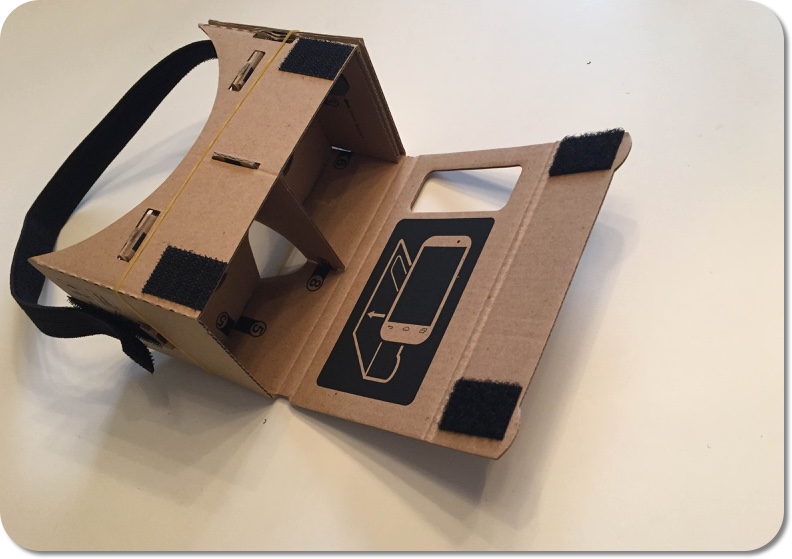

Virtual reality is an emerging technology that has the potential to disrupt just about every professional industry in the world. The problem, however, is that the technology simply cannot provide the immersive experience at a reasonable price. Companies like Oculus and HTC who are considered the industry leaders in VR delivery are offering high end Star Trek like space helmets with a steep $600.00 price tag. At the other end of the spectrum is Google's VR experiment, the Google Cardboard.
The Google Cardboard is a low cost VR headset that offers customers a taste of what VR is capable of. Google has since stopped selling the cardboard on their website but they have open sourced the entire blue print. All you need is a piece of cardboard, a couple strips of Velcro and two lenses, oh and a smartphone but you already had one of those (it is 2016 after all). If you're lazy like me you can order one from Amazon.
After building the cardboard and playing around with it here are my 5 takeaways:
1. My Suggested Apps
Outside of the official Google Cardboard app there were several Cardboard compatible applications. I was skeptical of any third party applications but I was pleasantly surprised with Jaunt VR, YouVisit VR and Vrse.

The contents of my order.
2. Product Quality - My Nose Hurts!
The Google Cardboard’s design is simple, functional and awesome. Two strips of Velcro, an elastic band and small slits in the carboard allow users to assemble the device in less than 5 minutes. My cardboard came with an extra Velcro band that lets you strap the device to your face (literally). The strap is not in Google’s design documentation and was an extra ’feature’ from the third party reseller. The strap makes things uncomfortable and resulted in some discomfort around the bridge of my nose. The additional stress from the tensioned bands also distorted the carboard slightly.
3. iOS Compatible?
Despite what is advertised the Google Cardboard is compatible with most iOS devices. The Cardboard was able to house my iPhone 6 & iPhone 5s perfectly, however, I don't think iPhone 6+ users would have the same success. The official Cardboard app is also available on the App Store which allows users to play with all of the functionalities of the device including the magnet side control.

The assembled Google Cardboard.
4. Potential for Developers
I like developing iOS apps in my spare time and after experiencing the Cardboard I think there's huge potential for developers. I was surprised at the amount of VR options available at the app store but they were all more or less copies of each other. With the emergence of 360 video support on sites like Youtube the application of low cost VR experiences are endless. Once developers find a way to interact with the smartphone outside of the available magnet side control VR games will start to gain traction. The challenge, however, lies in getting the hardware into people's hands and Google has done everything they can to make that happen with the Google Cardboard.
5. VR is Coming and Soon!
Virtual reality has been recognized as one of the latest technology trends in 2016. Every major tech company has mentioned their plans on the subject and now we're all eagerly waiting for a product. The headset approach seems like the most viable means that VR will enter the consumer market but it's not the only approach. Companies like Magic Leap have promised a VR experience that uses light fields to augment reality and change the way we think about virtual reality. With all of these major companies ramping up it seems as though only question left unanswered is who will make the biggest splash in the years to come?
For $20.00 CAD the Google Cardboard is a great opportunity for nerds like myself to experience VR for the first time. I think more low cost options will emerge and VR will be as common as your home computer in the next 2 years.